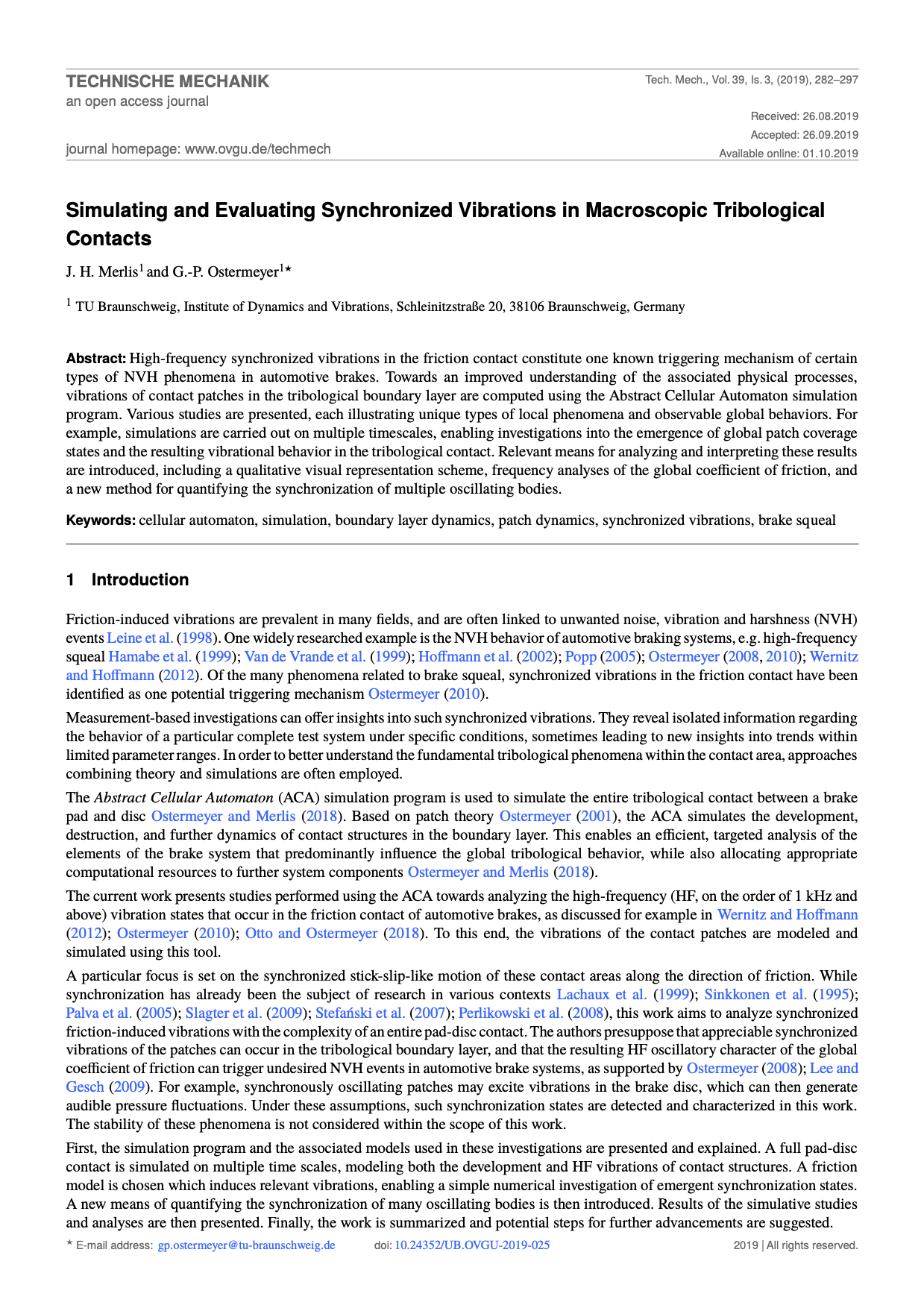Simulating and Evaluating Synchronized Vibrations in Macroscopic Tribological Contacts
DOI:
https://doi.org/10.24352/UB.OVGU-2019-025Keywords:
cellular automaton, simulation, boundary layer dynamics, patch dynamics, synchronized vibrations, brake squealAbstract
High-frequency synchronized vibrations in the friction contact constitute one known triggering mechanism of certain types of NVH phenomena in automotive brakes. Towards an improved understanding of the associated physical processes, vibrations of contact patches in the tribological boundary layer are computed using the Abstract Cellular Automaton simulation program. Various studies are presented, each illustrating unique types of local phenomena and observable global behaviors. For example, simulations are carried out on multiple timescales, enabling investigations into the emergence of global patch coverage states and the resulting vibrational behavior in the tribological contact. Relevant means for analyzing and interpreting these results are introduced, including a qualitative visual representation scheme, frequency analyses of the global coefficient of friction, and a new method for quantifying the synchronization of multiple oscillating bodies.





